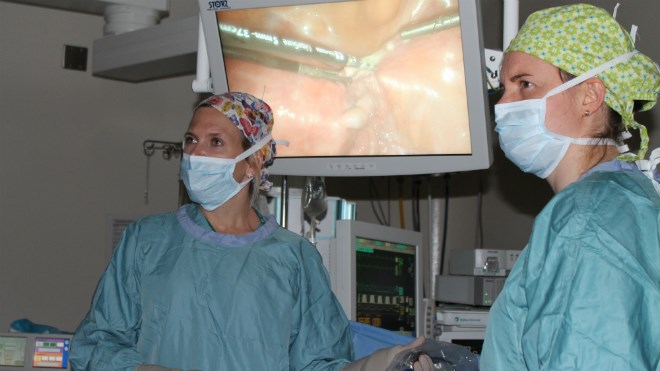Health Sciences North is launching an initiative to offer total laparoscopic hysterectomies – the removal of the uterus – as a day surgery for suitable patients.
Previously, the surgery kept women in hospital for a week. The new surgery can cut their stay down to a few hours.
In a total laparoscopic hysterectomy, between three and five tiny incisions of less than one centimetre each are made on the patient’s abdomen. Through the incisions, the surgeons detach the uterus, which can then be removed vaginally, or through one of the incisions using special equipment.
Patients can receive the procedure and return home the same day, and enjoy reduced scarring, pain, risk of complications, and time spent in hospital.
“We are excited to be able to offer this minimally invasive approach to more of our patients needing a hysterectomy,” said Dr. Sarah Wallace, a gynaecologist and surgeon, in a release.
“Successfully implementing a new procedure and process like this requires a strong commitment from the hospital and from each member of the surgical team, and we are very appreciative of the support.”
By contrast, a conventional hysterectomy is an invasive, painful surgery that involves an incision on the abdomen of up to 30 centimetres, greater risk of complications, days spent in hospital, and weeks recovering at home.
“We’re thrilled that new technologies and techniques are allowing us to offer this procedure as a day surgery to some of our patients,” said Dr. Karen Splinter, a gynecologist and surgeon who is also performing total laparoscopic hysterectomies, in a release. “It is making such a difference in the quality of life for the patients who receive it, and I look forward to doing even more of these procedures in the future.”
Join Sudbury.com+
- Messages
- Post a Listing
- Your Listings
- Your Profile
- Your Subscriptions
- Your Likes
- Your Business
- Support Local News
- Payment History
Sudbury.com+ members
Already a +member?
Not a +member?
Sign up for a Sudbury.com+ account for instant access to upcoming contests, local offers, auctions and so much more.
